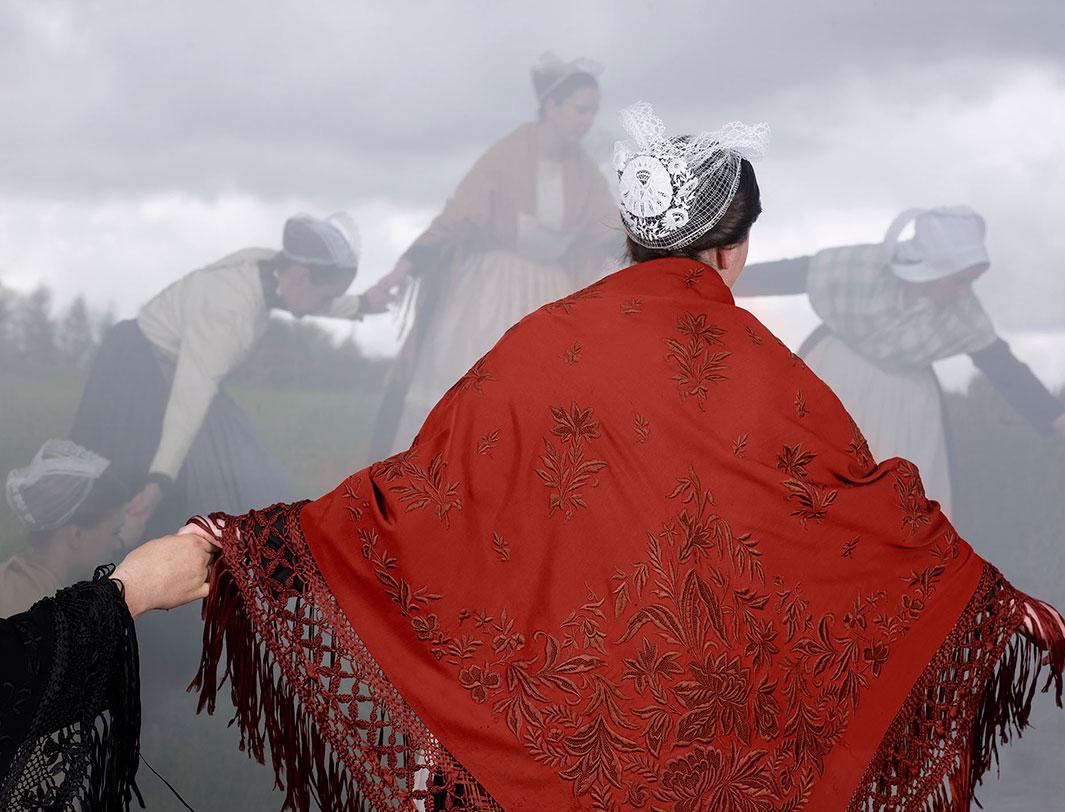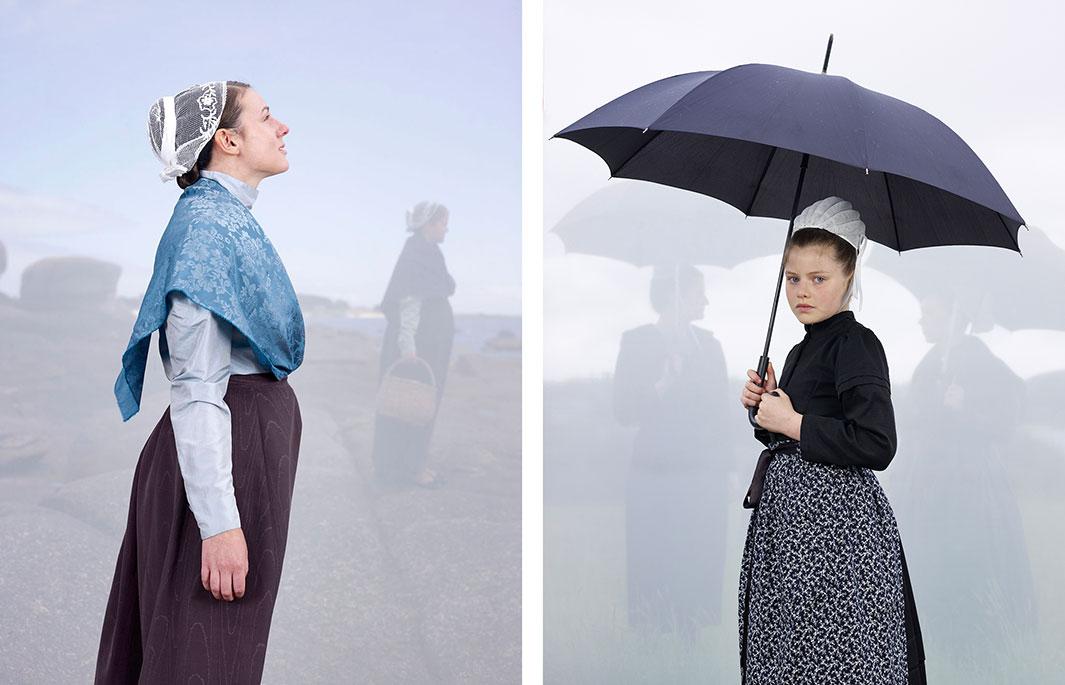If you were a woman living in Brittany during the 19th and 20th centuries, you might have been known as “Pig Ear.” You also probably called the women in the neighboring villages “Sardine Head” or “Sugarloaf.” Brittany, located in the northwest corner of France, was once home to a large number of lace headdresses or “coiffes” worn daily by women and the inspiration for the unique nicknames.
Charles Fréger, fresh off his “Wilder Mann” series that focused on pagan costumes found across Europe, began working on the series about the headdresses for a book, Portraits in Lace, which will be published in the United States on Sept. 8 by Thames and Hudson. The subjects of “Wilder Mann” were, as the title suggests, all men. While on an assignment in Brittany, he decided to focus on women. From 2011 to 2014, Fréger worked with more than 50 groups of women in the area creating painterly portraits that highlight the details of the unique attire.
The coiffes were originally used to protect women from rainy, windy, or sunny weather but also served to cover her hair and keep men at bay. They also indicated the village where the women lived, their age, and even social status. Although at one point there were around 700 coiffes, today, according to Yann Guesdon, who wrote about the history of the coiffes in Portraits in Lace, there are only three women who wear them daily. The Celtic circles, created after World War I to celebrate Breton culture, began organizing festivals during which women would once again wear the coiffes.

Charles Fréger

Charles Fréger

Charles Fréger
To create the portraits in the book, Fréger used local women as models, often during the time of the festivals, posing them outdoors while wearing the headdresses and costumes. He used a transparent gauze screen that not only gave a bit of “pop” to the subjects but also a peek into some staged action in the background.
“I had the idea that there was a complexity of just photographing the headdresses in the landscapes: a strong contrast between the blue sky and the white headdresses,” Fréger said. “I wanted something more subtle and I liked the idea of the screen acting as a type of border. To me it felt like a painting … I had to work with two perspectives at the same time.”
While some of the aforementioned nicknames were coined due to the appearance of the headdresses, sometimes the look came about for other reasons, such as a community that was devastated by a Cholera epidemic and subsequently adapted an all-black look.
“You can look at them as nice objects but they also have a social background, dealing with the industrialization of Europe and also how fashion began to invade the countryside,” Fréger said. “When Parisians were traveling, the fashion was beginning to influence the farmers so you have all of these stories that are interesting because they speak about the French social classes and the development of the country.”
Fréger said that although he continues to work on “Wilder Mann,” he is finished with Portraits in Lace since he feels it is complete. For the most part, his projects are typically a mix of anthropology and photography, a starting point for readers to learn about traditions and also for those who participate in them to have a connection to one another. For Fréger, delving into projects like Portraits in Lace is extremely satisfying.
“I like to work on projects for two or three years,” Fréger said. “It’s true that once I dig a hole I then want to go very far; I discover something and I push further.”

Charles Fréger
